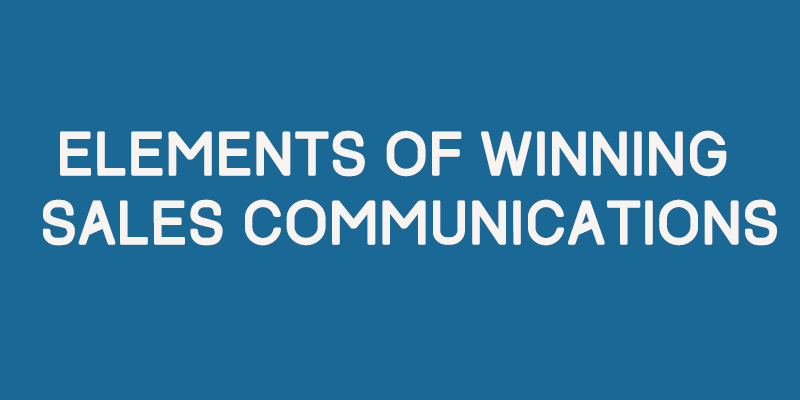|
Singapore has been ranked as one of the best places for startups in Asia and around the world. It is well-positioned geographically, offers great infrastructure and logistics, as well as diverse, well-educated talent pool. Singapore is strategically located within hours from fast growing economies such as China and India and consistently attracts the best and brightest minds from different parts of the world. Venture funding, government support and developed startup ecosystem, together with features mentioned above makes Singapore an attractive place for entrepreneurs. more than 50. Let’s have a closer look at some incubators and accelerators in Singapore.
1. Golden Gate Ventures It is an early stage incubator helping internet startups build and launch successful companies across Southeast Asia. Golden Gates Venture’s founding partners share a rich background building successful Silicon Valley startups and managing investments in Silicon Valley and Asia. What is interesting: For startups at their Ideation and Concepting stages, Golden Gate Venture offers 100 Day Bootcamp Program, which is run once or twice per year. Since March 2012, Golden Gate Ventures has been accredited as a Technology Incubation Scheme (TIS) incubator by Singapore’s National Research Foundation. Results: Last year Golden Gate Ventures invested $10 million into startups in their first year. The portfolio includes RedMart.com (online grocery), Coda Payments (mobile payments), and Nitrous.io (web dev tools in the cloud). 2. The Joyful Frog Digital Incubator The Joyful Frog Digital Incubator is recognized as the most successful in Southeast Asia. It is also the oldest among the pack, which should highlight why the company has the most comprehensive, systematic and consistent programs for a wide range of startup companies. The Joyful Frog Digital Incubator piloted its startup accelerator programme in 2012. Over two years JFDI startups raised over $ 7.2 million in seed funding. What is interesting: consistently achieving 60%+ success taking startups to investment in 100 days. Typical startups raise around $ 550 000. In exchange for a minority stake every team, who has been selected for the program is offered a package including cash investment, mentoring, working space. Results: 38 startups have graduated, out of those 34 are still active. 3. Jungle Ventures Jungle makes seed to early Series A investments across Asia Pacific and also operates an early stage accelerator in Singapore. Founded in 2011 with focus is on early stage investments into Singapore, India, South East Asia and other regional hotbeds of innovation. What is interesting: Startups through the seed fund accelerator can look to get: S$50-500K in startup funding, co-investment by 500 Startups, a leading SV based fund, and more. Results: Current portfolio companies include micro-lending platform Milaap, mobile commerce app ShopSpot, and vacations rental site Travelmob which was acquired by Homeaway last year. So far 27 investments has been made, 24 startups still active and 3 successful exits.  Start-up ecosystems around the world are scaling new heights. Startups raising millions of dollars and numbers are growing. Here are 9 things to consider before raising funds for a start-up: 1. Never have more than 3 founders Too many cooks spoil the broth. Having 2-3 founders is an ideal choice. In case you need more experts, you can always hire them. In rare cases more than 3 founders stick together; if the number is more, ultimately, it boils down to 2 or 3. Having one founder is also a bad option. Having different perspectives and divided risks is always a favourable position to be in. 2. Analyse the market; the idea may be good, but the market may not be ready It is primarily important to interpret the existing market scenario in terms of your idea. Broadcasting your idea at the right time is where most of the startups fail. Therefore, first analyse the market and then take a call. If needed keep patience and wait for the market to develop according to your perspective. 3. Pick the right mentors Having the right mentors to guide you and help you manage risk is a blessing in disguise. Even though there are no hard-and-fast rules of choosing a mentor, make sure that your frequency and belief matches. A mentor should believe in your idea and ambition, as a result, making your journey easy and a learning experience. 4. Maintain your accounts A list of expenses of the previous and the upcoming months should always be maintained. This helps you keep track of where the money is going and how much money will be needed. As a result, while going to an investor, you can always show them the accounts and logistically present the amount of funds required. 5. Ensure financial stability in your personal life Giving up an existing job to start a venture is quite a challenging task. Knowing well that the risk may or may not bear fruit, it is of utmost importance to ensure that all the debts are cleared. Also, make sure that the medical insurance, family savings and credit cards are in place. Alongside, keep a minimum runway of 9-12 months. Once all the basic things are taken care of, it will become easier for the risk taker to concentrate on his venture. 6. Family money Keeping personal reputation at stake is riskier. Considering that most startups fail, ideally, family money should not be more that 5-10% of the total investment. 7. Consider funds as a bonus Planning a startup on the basis of bootstrapping is considered to be an ideal one. This helps you concentrate on your business completely rather than hunting for an investor. Also, this will help you control the company completely without any pressure from outside investors. 8. Go to 3-4 investors see what they are asking for Meeting an investor can be a learning experience. Listen to all the questions he asks for after you give your presentation and make a note. Remember, those are the areas the investor is not comfortable with. The more you meet investors, the more you will be able to understand the loop holes in your venture. 9. When a startup does not work, it is good to accept it The bitter truth is that approximately 80-90% of start-ups fail. It is good to make your call and move on if things don’t fall into place. Of course, this should be the last resort but as a risk taker, remember that at times you need to let things go. ___________________________________________________________________________________________ This is an edited version of a post originally posted at yourstory.com, by Richa Maheshwari (reporter from Yourstory.com). You are free to re-edit and repost this in your own blog or other use under Creative Commons Attribution 3.0 License terms, by giving credit with a link to www.startupcommons.org and the original post.  It has been three years building Hammer and Mop, and it seems like one long arduous trek- eventful and full of valuable lessons. There have been times when my limbs threatened to give up, but a look at the distant peak usually set things right again. Last year, it felt good completing two years out in the cold. We have now reached the base camp. There are some things I’ve learnt and thought it worthwhile to share: It’s all about people I cannot stress this enough. Right from the day I decided to start off on this trek, till the day I pitched my tent at the base of this peak I have been helped, advised, counselled by people with whom I share a genuine relationship that is mutually beneficial. Customers are people who you need to communicate with. Allies are people who need to get value out of an association. Team members are people who need to feel respected and a part of the game. Your family — with their unconditional love — only fear for your sanity. You are a human and you need to love yourself. It’s all about information Today, we are a team of individuals following certain processes and believing in certain ideas day after day. At all levels, our focus is hiring leaders who can grow with the company by lending their shoulders to the task. Distilling the broad vision to profile specific short term goals has helped us perk up performance and boost accountability. A team supervisor focuses only on cleanup quality, communications focuses only on information flow, and so on. Our mentors and well wishers help us keep a holistic perspective. While the team is a submarine working hard at being submerged, our mentors provide the periscope. It’s all about your team We are crazy about the peak and take lead to manage aspects while figuring out the way through the jungle. I didn’t know what to expect out of ‘employees’ three years back and my errors cost me my entire team once. Proper policies, complementary skills, mutual respect, clear communication and a healthy work environment play a big role. Most of my team consists of blue collar workers. The vicious circle of managing them is a misconception, because respect has to be earned. I have learned that everyone likes the peak, and is keen to play a well defined role in a performing team. Things fall apart if clarity is lost. In a jungle, we have realized that we need to have each other’s back and that has helped us keep going. It’s all about your customers And they are loveable humans too. Their expectations are pretty simple, and they pay, so keeping them happy is key to a successful business. They understand goof ups, empathise and offer support. Customers seek an honest relationship and are generous with compliments if things go well. They are generous with critical feedback if things don’t. I have been fortunate to have numerous patrons who have held our hands throughout, helping us get better at what we do. Negotiations have seldom been about money, they almost always transcend to intangibles if the game is played right. Customers seek trust, which is built by consistent service. Being open and apologetic about our weaknesses has helped us live. It’s all about money Not at the cost of ethics and quality. You might be in the business to contribute to the society, but you dig your own grave by not being focused on cash flow and profits. Money is the essential grease, profits can be reinvested for growth, healthy cash flow provides you with bandwidth to make your customers happier. An organisation needs to sustain itself and its people, and that’s why it needs to earn money. To ensure the same, for a young company like ours, that’s the CEO’s job. It’s not about the comfort zone At the start, I remember my co-founder urging me to be on the field and find recruits. “Go out and smell the fresh grass, ongoing analysis sitting in the comfort zone isn’t going to make things happen,” he had said. Finding our own spot is a trap, because the proactive explorers win. While it is essential for startup CEOs to know every aspect of the business they run by rolling up the sleeves, it is crucial they ask their senior team members to do the same too. A company won’t grow with leaders sticking to their offices. A company won’t grow without pushing all boundaries. ____________________________________________________________________________________ This is an edited version of a post originally posted at yourstory.com, by Sushrut Munje (Co-Founder of Hammer and MopYou are free to re-edit and repost this in your own blog or other use under Creative Commons Attribution 3.0 License terms, by giving credit with a link to www.startupcommons.org and the original post. Sushrut Munje. Make no mistake about it. Silicon Valley is expensive. Actually, it’s very expensive. But if you’ve ever spent any time in the Valley then you already knew that. For those on the outside, then you can believe that rumors surrounding Silicon Valley’s pricey cost of living are true.
Should you move your business to Silicon Valley? Before you make that decision, here are a few things you should keep in mind? But, just how expensive is Silicon Valley really? Compared to the rest of the country, the cost of living is 87% higher in the Valley than any other American city. When it comes to housing, Silicon Valley is also the most expensive in the U.S. In fact, based on a survey conducted by Coldwell Bankers in its “Luxury Market Report 2014,” Woodside, CA is the nation’s top luxury market. Woodside wasn’t the only town located in Silicon Valley to crack the top five. Portola Valley was third, with Hillsborough coming in at number four. So, if you wanted to relocate to Woodside, expect to spend $949,000 on a two bedroom house with one bathroom and a fireplace – this for the record was the cheapest listed house in Woodside. Trulia, however, found that the average listing price for homes in Atherton at $9,347,107, which could make it the most expensive city in the country. But what’s a couple million dollars when you’re living in the same area as the guys who founded Google, Larry Ellison, Mark Zuckerberg, George Lucas and Paul Allen? In case you were wondering, there are 71 billionaires who call the Bay Area home, so of course it’s going to be expensive. So what if you’re not a billionaire? Let’s say you’re just you’re a teacher or even an engineer, what’s the price range? The median price for a home is $550,000 in the whole bay area. If you’re looking at San Francisco, it’s around $1.1 Million. And rent? You’re looking at around $3,000 a month for a two-bedroom apartment, which is 76% more than the national average. I personally pay $2,700 a month for my one bedroom in Palo Alto. I had to consider this before I moved my startup to Silicon Valley. To put it another way, if you have a family of four, you would need $90,000 a year to cover rent, food, transportation and childcare. To be more upfront, Silicon Valley is the 7th least affordable housing market for middle class families, San Francisco captured the top spot. Of course, the housing situation isn’t the only major cost in the Silicon Valley. Living in California also means that if you make over $46,776 a year, the state is going to hit you with a 9.3% income tax. Speaking of taxes, whenever you go out and do some shopping, just remember that California has the second highest state and local sales tax rates at 9.08%. Even Hawaii has more favorable sales tax rate at 4.35%. If you look at the ten most expensive cities in regard to sales tax, Fremont and San Francisco are included. As for basic necessities. Silicon Valley is 62% higher than the national average. And gas prices? Both San Jose and San Francisco are included in the ten most expensive cities for gas at over $4 per gallon. Is any of this that big of a concern when you reside in one of the highest paying areas in the country? (Web developers earn $25,000 more than the national average and customer service representatives and lawyers also do well here). Well, it should. Despite Silicon Valley having a reputation for having a higher median income (it was $60,000 in 1993 compared to the $30,000 elsewhere in the country) it’s still a concern if weighing your options on whether or not to live in Silicon Valley. For example, if you made $92,300 a year in the Valley, you would need $74,800 to live that same exact lifestyle in New York City. That’s not saying that you should relocate or never move to the Valley. It’s just bringing up a comparison to give you a better understanding of how pricey, it is to live in Silicon Valley. If you already reside in the Valley, then you already know how expensive it is for housing, gas, food, etc. And hopefully you’ve been fortunate enough to make enough in your salary that you can enjoy the weather and everything else that Silicon Valley has to offer. However, if you’re looking to move to this area because you think it’s magical and can help make your startup a success, you may want to consider other options if money is tight. While it’s an incredible place to work and play, the Valley is really, really expensive. _____________________________________________________________________________________ This is an edited version of a post originally posted at yourstory.com, by John Rampton (President at Adogy), an entrepreneur, full-time computer nerd and startup expert. You are free to re-edit and repost this in your own blog or other use under Creative Commons Attribution 3.0 License terms, by giving credit with a link to www.startupcommons.org and the original post. It is very typical to measure mature of startups ecosystems in terms of new startups, growing startups, investors, investments, exits, etc. and it makes sense as cities use these statistics in the best possible way to communicate their economic growth at high level and to attract other relevant people, investors, big companies, more entrepreneurs and other stakeholders. These indicators are however the result of many smaller activities present in a startup ecosystem that contribute to these higher level results - as any startup ecosystem is the sum of multiple variables of an unbalanced equation inherent to the interactions of the startup ecosystem itself. So, as you can figure out, you need much information to talk about matureness of startups ecosystems. But most of all, you need a good understanding and analysis of your startup ecosystem at different levels and mapping it usually is a good starting point to set up new strategies and achieve a better economic development. But the thing is that properly mapping a startup ecosystem is more than just to create a good map to show who is who in your city or region. It is crucial to work at different levels and in more detail:
We truly believe everyone should work on this model, as it makes the investments to growth and innovation truly visible and measurable - as only the things that can be measured can be improved. And the faster the feedback loop, the faster things can be improved. Actually we are working with this model with few key cities like Helsinki at ecosystem level and even more broadly with independent organizations and we are clearly seeing that it is possible to build a vibrant startup ecosystem in a city in three to five years, what is half or less, compared to known average. Future entrepreneurs and current startups deserve this new scenario that we at Startup Commons are creating and we encourage others to contribute and develop innovation, better, faster and with less resources. Are you a consultant or an entrepreneur? - Learn more about Growth Academy Online Training & Certification Programs Download our startup booklet and watch our videos to learn more about our framework to help startups to grow without "reinventing the wheel" and without wasting lot of time trying to connect the dots. The framework is based on the startup development phases and aims to remove the highest universal risks on the startup journey. This is an originally posted by Óscar Ramírez, CEO Startup Commons. You are free to re-edit and repost this in your own blog or other use under Creative Commons Attribution 3.0 License terms, by giving credit with a link to www.startupcommons.org and the original post
In his new book, Biz Stone, the Co-founder of Twitter, discusses the power of creativity and how to harness it through stories from his remarkable life and career. Stone is known as the creative, effervescent, funny, charming, positive, optimistic, altruistic and yet remarkably savvy Co-founder of Twitter. His book Things a Little Bird Told Me: Confessions of the Creative Mind spans 224 pages and 18 chapters, and covers the pivotal and personal stories from his life along with lessons earned and learned the hard way.
Born in Boston in 1974, Biz Stone’s first startup was Xanga. He was recruited by Google in the early 2000s, and connected with Blogger founder Evan Williams; the pair later left to work on their own startup Odeo. Twitter was founded in 2007 after a hackathon when the original videocasting product did not pan out as materialised. Twitter’s dizzying global success led to Stone being recognised by ‘Time’ Magazine as one of the most influential persons in the world. His other books include Who Let the Blogs Out? A Hyperconnected Peek at the World of Weblogs. “Creativity is what makes us unique, inspired and fulfilled. This book is about how to tap into the creativity in and around us all,” Stone begins. Here areTop 20 Takeaways from his book, offering insights into creativity, ethics and global vision. 1. Create opportunities, don’t wait for them “Opportunity is manufactured,” says Stone. Don’t wait for circumstances to align your stars, go ahead and make the opportunity yourself. He used this principle even in school days to create a lacrosse team since he was not good in other sports; he also landed his first job as a book cover designer by submitting a cover to the art director even though he was just interning as a delivery boy. 2. Start with an idea Don’t dig into specifics first, start off with an idea. “If you take an idea and just hold it in your head, you unconsciously start to do things that advance you toward that goal,” says Stone. “Have confidence in your ideas before they even exist,” he advises. Sometimes even a sense of desperation that you will eventually get an idea will keep you going. 3. Invest emotionally in your idea “If you don’t love what you are building, if you’re not an avid user yourself, then you will most likely fail even if you are doing everything else right,” says Stone. His startup Odeo did not go too far because he was not into audio podcasts himself, and therefore missed out on important features such as sound quality. Twitter, on the other hand, brought Stone much more joy and excitement. If you are not engaged, you cannot go on, there will be no gravity. 4. Creativity has infinite approaches One thing Stone learnt as a book cover designer is that there are infinite approaches to frame, understand and solve a problem. If one of your creative ideas does not work or does not find acceptance, let go and move on to another one. Don’t take rejection personally. “Creativity is a renewable resource. Challenge yourself every day. Be as creative as you like, as often as you want, because you can never run out. Experience and creativity drive us to make unexpected offbeat connections. It is these non-linear steps that often lead to the greatest work,” explains Stone. He drew on this principle while working at Google – full of PhDs while Stone himself was a college dropout; he advocated a focus on the human aspects of tools and not just technical. 5. Learn to harness constraints for creativity “Constraint inspires creativity,” says Stone, drawing on a number of examples, including his own. Steven Spielberg had a limited budget for the movie Jaws – so instead of creating an expensive replica, he decided to shoot from the ‘shark’s point of view’ – which turned out to be even scarier. Harrison Ford had the runs while shooting The Raiders of the Lost Ark – and instead of dueling a swordfighter in one scene, he just proposed a gunshot – which became an iconic moment in the film. Due to resource constraints, ARM came up with chips which were just not good enough for PCs – but ended up being perfect for cellphones. “Embrace your constraints. They are provocative. They are challenging. They wake you up. They make you more creative. They make you better,” says Stone. Detractors initially said Twitter’s 140 character limit was constraining – but that unleashed a new form of wit and creativity, and power for activists. If you’re in sales, you are always communicating. Your silence on a question that’s posed to you is also communicating something; not something good, that’s for sure. Winning sales communications move the deals forward. Anything less will stall or slow down the deals. The Foundation for Winning Sales Communications
It may seem like the foundation is going to be ability to write well. While that’s an important skill to have, the foundation is really is the intent with which you approach the sale. Your intention has to be based on three solid pillars of serving, caring and providing value. A. Intent to Serve: Your first and final intent has to be to help your prospects with their needs with one or more of your offerings. Of course, you don’t need to sacrifice your needs. B. Intent to Care: You MUST care for your prospects concerns as if they are your own concerns. Put yourself in the shoes of your prospect and look at the deal from the other side of the table and see if the deal looks fair. If not, you need to go back to the drawing board. C. Intent to Provide Value: However basic this appears to be, this is an important pillar. Your intent to provide value should be unquestionable. With that in the backdrop, here are seven elements of winning sales communications: 1. Responsive: Even just a handful of years ago, B-2-B prospects were at a disadvantage, overwhelmed with new possibilities and solutions. Today it’s exactly the opposite. By the time a prospect reaches out to you, they’ve more than likely already researched potential solutions online, and they are much further along in the buying cycle. Sure, your offerings are differentiated from your competitors’. But as markets become more crowded with competing vendors, sales and marketing messaging is increasingly commoditized. When offerings look more or less the same from a feature/function perspective, responsiveness takes the center stage. Respond late to a customer inquiry or other request, and even with a reasonably good offer, you might end up losing the deal to someone else who was more nimble. Problem is, there’s only so much time in the day, so responding in 10 minutes instead of 10 days requires the right tools and mindset. EXAMPLE: “Hi [FIRST NAME], Thank you for your inquiry. Please find below my responses to your specific questions. Also please know that as long as we work together, I will try to respond to any call or email within 12 hours (and I’ll try to be much faster!). While our solutions and services are unique in the market, at [COMPANY] we also differentiate ourselves by our responsiveness and dedication to customer care and satisfaction. Best Wishes, <Your name>” 2. Right The response has to be accurate on many fronts. This seems like a given, but think of all the emails and other materials that are riddled with “unintended hyperbole”, exaggerating to the point that it’s nauseating. A few examples: - We build world-class inventory software - We make the world’s best burgers - We are the gold standard in compensation consulting - We have the industry’s leading ecosystem of fully-integrated interfaces to all major functional applications and officially-certified business processes. Unintended hyperbole is on one end of the annoyance spectrum. On the other end, you have “willful misrepresentation” of facts to make your offering look superior to competing vendors’ offerings. In the latter case, you might be able to win in the short-term, but only at the expense of your longer-term credibility and opportunities in the account. More often, negligence is the culprit; sellers rely on content they know may not be the most recent or accurate. Being right is often nothing more than ensuring that sales-ready content is easily vetted and approved by the right stakeholders. This shouldn’t require circulating documents or lengthy meetings. More importantly, once vetted, the content needs to be readily accessible (meaning at the “point of use”) at the front lines of sales engagement.  Tristan Kromer, as a Lean Startup Coach and advisor based in San Francisco, has a unique obsession: help product teams go faster. He has been doing this during the last five years working with product teams and innovation leaders to apply lean startup principles to teams and innovation ecosystems. Enjoy the interview we made him and discover his great entrepreneurial thinking and mindset. Brief description about your background, experience, journey... I've spent ten years in the music industry, five in IT security, and the last five years in startups. I spend about 50% of my time working with early stage startups and the other 50% professionally helping enterprises and accelerator programs develop their innovation ecosystems. Imagine an entrepreneur with no experience but with a great idea and right attitude. Which would be your first three advices? 1) Your product idea is probably wrong. Focus on your vision instead. Find someone you really want to help. Someone in pain. That's your vision. Helping someone and solving a real problem. 2) Find team members with complementary skill sets who are able to challenge your perspective and add their own. 3) Go talk to customers. How to find a good mentor for your startup? Look for someone who doesn't give you their opinion but instead challenges you with questions that makes you think. You are running different initiatives. Have you got any mentor? If so, who is he/she and why did you choose him/her? My team is my mentor. The customer is my mentor. My friends are my mentors. I rely on other people to challenge my perspective. People like Sean Murphy, Spike Morelli, Laura Klein, Nick Noreña, Zac Halbert, Janice Fraser. People who are willing to question me or tell me I'm wrong. There's a common buzzing in most of startups communities: Lean Startup vs Business Plan. What do you think about that? The battle is over. The business plan lost. Some people just haven't noticed yet. Which is the biggest barrier to implement Lean Startup in a company? It varies by company. Some don't put together cross functional teams to get out of silo based, waterfall development. Some don't know how to evaluate early stage startups on the appropriate metrics such as iteration velocity or actionable metrics. Some simply don't know how to put together innovative teams. The scrappy people who break the rules and get angry when they see problems are often viewed as troublemakers and isolated. In Silicon Valley, we celebrate those people. From accelerators perspective, What do you think about ...?
Accelerators shouldn't sit around playing hypothetical scenarios and critiquing business ideas. They should be sending entrepreneur's out into the world to figure out for themselves what's a good idea by getting data for real customers. The only thing that an accelerator might be able to do from an armchair is help identify which are the riskiest parts of the business that the entrepreneur can then investigate.
Startups should talk to customers. Accelerators should train startups to talk to customers. They shouldn't be in the room when that happens. They shouldn't be responsible to find the customers
In terms of Validated learning from customers. What did you learn from music industry that you can apply now to startup scene? The team dynamics are identical. It's a group of creative people with different skill sets who have to come together and play in harmony (and sometime disharmony when appropriate.) They are creating something new out of thin air. Being able to understand who works well with who and how to get people to perform at their best is very challenging. I don't think I'll ever master it, but I'm getting a bit better. Which was your biggest mistake launching a startup? Not knowing how to code. I've since corrected that error. It's a basic literacy like reading and writing. Everyone needs to know at least the basics but preferably should be able to launch a basic prototype within 24 hours. There's so much great open source software out there that there is no excuse to not being able to cobble together an MVP. Which is the most challenging project that you have now? Recruiting and managing an all volunteer force for Lean Startup Circle. I haven't figured out how to scale that as an operation. We now have a very consistent group in San Francisco that shows up month to month to put on events but to get people showing up weekly or even daily to put in a few hours to build up the organization globally...that's a trick I haven't figured out yet. Are you a consultant or an entrepreneur?
- Learn more about Growth Academy Online Training & Certification Programs Download our startup booklet and watch our videos to learn more about our framework to help startups to grow without "reinventing the wheel" and without wasting lot of time trying to connect the dots. The framework is based on the startup development phases and aims to remove the highest universal risks on the startup journey. |
Supporting startup ecosystem development, from entrepreneurship education, to consulting to digital infrastructure for connecting, measuring and international benchmarking.
Subscribe for updates
Startup ecosystem development updates with news, tips and case studies from cities around the world. Join Us?Are you interested to join our global venture to help develop startup ecosystems around the world?
Learn more... Archives
December 2023
Categories
All
|
- Startup Commons
- Business Creators
-
Support Providers
- About Support Providers
- Learn About Startup Ecosystem
- Startup Development Phases
- Providing Support Functions
- Innovation Entrepreneurship Education
- Innovation Entrepreneurship Curriculum
- Growth Academy eLearning Platform
- Certified Trainers
- Become Growth Academy Provider In Your Ecosystem
- Growth Academy Training On-Site By Startup Commons
-
Ecosystem Development
- About Ecosystem Developers
- What Is Startup Ecosystem
- Ecosystem Development
- Ecosystem Development Academy eLearning Platform
- Subscribe to Support Membership
- Ecosystem Operators
- Development Funding
- For Development Financiers
- Startup Ecosystem Maturity
- Case Studies
- Submit Marketplace App Challenge
- Become Ecosystem Operator
- Digital Transformation
- Contact Us
- Startup Commons
- Business Creators
-
Support Providers
- About Support Providers
- Learn About Startup Ecosystem
- Startup Development Phases
- Providing Support Functions
- Innovation Entrepreneurship Education
- Innovation Entrepreneurship Curriculum
- Growth Academy eLearning Platform
- Certified Trainers
- Become Growth Academy Provider In Your Ecosystem
- Growth Academy Training On-Site By Startup Commons
-
Ecosystem Development
- About Ecosystem Developers
- What Is Startup Ecosystem
- Ecosystem Development
- Ecosystem Development Academy eLearning Platform
- Subscribe to Support Membership
- Ecosystem Operators
- Development Funding
- For Development Financiers
- Startup Ecosystem Maturity
- Case Studies
- Submit Marketplace App Challenge
- Become Ecosystem Operator
- Digital Transformation
- Contact Us







 RSS Feed
RSS Feed

